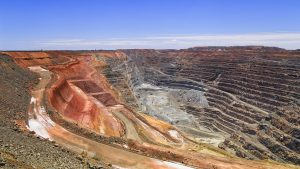The Australian Federal Government has released a new Critical Minerals Strategy, which sets out to strengthen global energy supply chains and achieve net zero emissions.
Madeleine King, Minister for Resources and Northern Australia, has released the new Critical Minerals Strategy to make Australia a globally significant producer of raw and processed critical minerals. The Strategy sets out to create Australian jobs in mining and manufacturing, strengthening economic opportunities for all Australians.
Future government policy will be guided by the framework to maximise the national benefits of Australia’s reserves and resources of critical minerals.
As one of the first policy decisions under the Critical Minerals Strategy, the government will target $500m of new investment into critical minerals projects. This will be done through the Northern Australia Infrastructure facility.
The Strategy will also ensure that the critical minerals list is updated.
Australia can play a crucial role in delivering the world’s critical minerals needs
Minister King stated that the Critical Minerals Strategy highlights Australia’s role in delivering the critical minerals needed for the global clean energy transition. The Strategy builds upon Australia’s vast reserves and resources and reputation as a reliable exporter of resources and energy.
“The new Critical Minerals Strategy outlines the enormous opportunity to develop the sector and new downstream industries which will support Australia’s economy and global efforts to lower emissions for decades to come,” Minister King said.
“While the potential is great, so too are the challenges. The Strategy makes it clear our natural minerals endowment provides a foot in the door, but we must do more to create Australian jobs and capitalise on this unique opportunity.”
The decision builds on the government’s wider suite of policies to support the sector. These include finance through the Critical Minerals Facility and National Reconstruction Fund, investments in research and development, and grants to help develop early- to mid-stage critical minerals projects.
Creation of jobs and opportunities
It has been reported that increasing exports of critical minerals could create more than 115,000 new jobs and add $71.2bn to GDP by 2040.
However, if Australia builds a downstream refining and processing capacity, the number of jobs could increase by 262,600, according to independent modelling. The GDP could also increase to $133.5bn by 2050 if the country secures a greater share of trade and investment.
Australia’s critical mineral potential on the world’s stage
Australia is the world’s largest producer of lithium, the third largest producer of cobalt, and fourth largest producer of rare earth elements.

The country also produces large amounts of aluminium, nickel, and copper, which are crucial for low-emissions technologies. These include electric vehicles, batteries, solar panels, and wind turbines.
Critical minerals are also important for defence applications and medical technologies.
The government is working with industry and international partners to help Australian projects link to emerging markets in the UK, US, Japan, Korea, India, and the EU.
The Critical Minerals Strategy has six focus areas
The Strategy’s six focus areas are:
- Promoting Australia as a world leader in environmental and social governance (ESG) standards;
- Unlocking investment in enabling infrastructure and services;
- First Nations engagement and benefit sharing, to strengthen engagement and partnership with First Nations people and communities, and to improve equity and investment opportunities for First Nations interests;
- Attracting investment and building international partnerships, to optimise trade and investment settings for priority technologies;
- Developing strategically important projects, with targeted support; and
- Growing a skilled workforce.
The Strategy will involve collaboration with state and territory governments.









